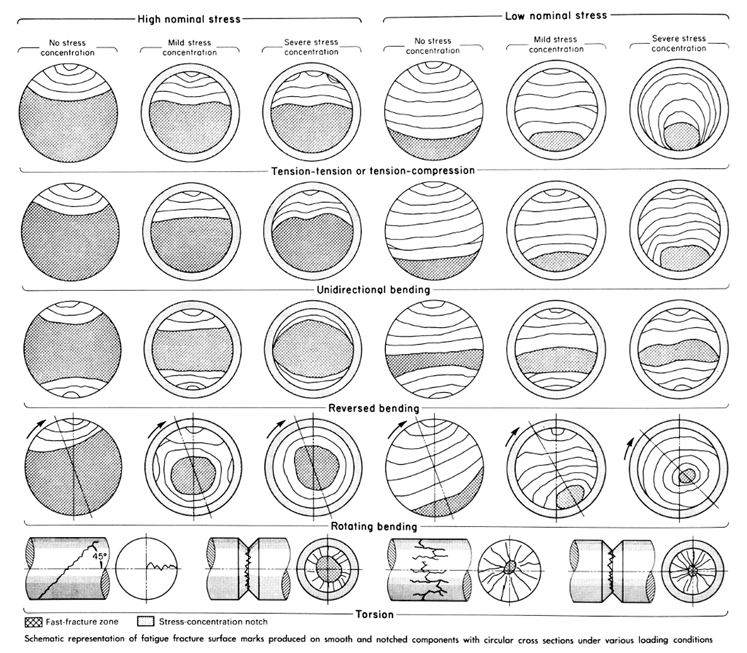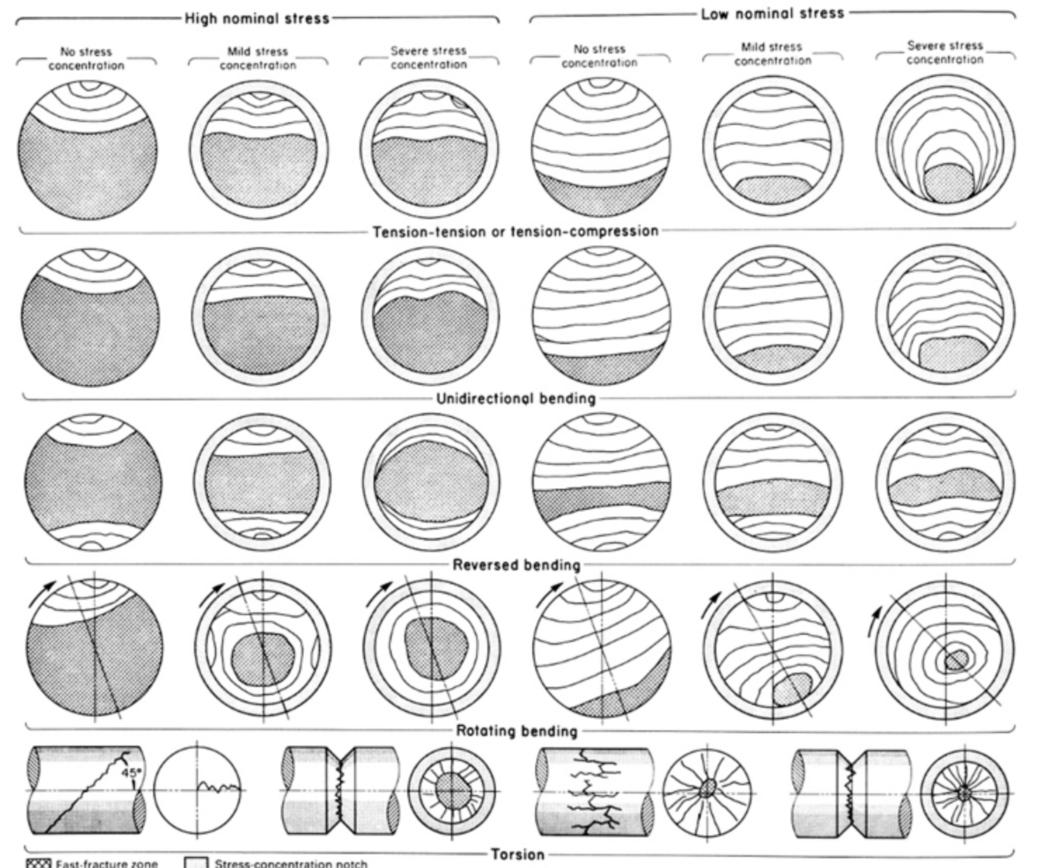When dealing with the initiation of fatigue on a metal body, numerous factors must be taken into account to hinder the propagation or inhibit the initiation. Under the cyclic loads, even microscopic cracks may lead to fatigue failure in metal bodies. Hence, several reasons contribute to the emergence and progress of these cracks. The importance of the surface properties for the fatigue properties and life of the metal is non-negotiable since the initiation of the cracks mostly takes place at the surface of the metal bodies. Hence, one of the most crucial parameters that affect fatigue properties and life is the surface characteristics of the metals. Surface characteristics of the metals may be affected by metallurgical impurities, mechanical properties, and secondary treatments that are implemented to the metal for various reasons. However, other crucial parameters for fatigue properties must be discussed as well as the surface properties. These parameters can be mentioned as applied mean stresses and environmental effects. The applied stress amount to the metal body may decide the progress of the fatigue in the metal body. The progress of the fatigue is vital for engineering considerations since the detection of the fatigue on the metal body is also crucial for the prevention of catastrophic failures.
The stress amount on a metal body must be well calculated before the utilization of the engineering components. Aside from the fracture characteristics of a metal, the amount of maximum and minimum stresses on dynamic parts are substantially significant for the fatigue properties. The stress concept for the fatigue properties of the metals has several subtopics, which can be stated as stress amplitude, mean stress, stress ratio, maximum and minimum stresses. The amount of stress amplitude on the repetition number is inevitable. One can understand the relationship between the stress amplitude and cycle number by examining the S-N curves. As the applied stress amplitude decreases, the number of load repetitions (Number of cycles or Nf) increases. Hence the fatigue properties of the metal can be enhanced by implementing low amplitude stresses on metal bodies. For ferrous metals, an endurance limit can be detected by utilizing necessary fatigue tests. Therefore, a safe zone for metals where there is no fatigue failure possibility can be determined for corresponding stress amplitude values. In contrast with ferrous metals, nonferrous metals do not exhibit an endurance limit; however, lowering the amplitude of stress also enhances the fatigue properties for these metals. The effect of mean stress must also be considered. The increment in the amount of mean stress directly reduces the fatigue life or the number of cycles of the loaded part. Contributions of the various stress terms can be deleterious for the components. Up to now, the effect of stress on the number of cycles to failure is discussed. However, the effect of nominal stresses must be examined to understand the stress effects on fatigue properties. The steps of the fatigue mechanism can be stated as the initiation, propagation, and final fracture. The initiation step covers a small area on the fractographic surface compared with the propagation and final fracture areas. The propagation zone exhibits beach marks that are distinctive for fatigue failures. When the critical crack length is achieved on the propagation zone, a final fracture suddenly occurs. Hence, for the prevention of the sudden fractures on the engineering metals, the larger propagation zones are desirable for the experts. For the same metal, the propagation and final fracture areas differ for various stress amounts. The same material, under low nominal stress, performs a fracture surface with a higher propagation zone. In contrast with that, under high nominal stress, the same material exhibits smaller propagation zones and larger final fracture zones. As mentioned below, the propagation zone is characteristic of fatigue failures and more desirable than the large fracture zones since they exhibit beach marks (clamshell marks). Hence the detection of crack propagation is easier for the low nominal stresses. The below figure shows the difference between the propagation and fracture zones for low and high nominal stresses.

Figure 1. Fracture surfaces under high and low nominal stresses. The propagation zones are distinctive because of the curvy lines. The smooth black zone represents the final fracture zones. The difference between propagation and fracture zones for high and low nominal stresses are apparent. Fastener Fatigue | Fastenal. (2020). Retrieved December 2020, from https://www.fastenal.com/en/3289/fastener-fatigue
For further information please read: Metal Fatigue – Wöhler Plot and Mechanisms
Read more: Important Parameters for Fatigue Life
References
- Callister, W. (2001). Fundamentals of materials science and engineering (9th ed., pp.271,280). New York: Wiley
- Milella, P. (2013). Fatigue and Corrosion in Metals (1st ed.). Milano: Springer
- Hosford, W. (1993). The mechanics of crystals and textured polycrystals. New York: Oxford University Press.
- FATIGUE PHYSICS | Fatigue Life LLC. (2020). Retrieved December 2020, from https://fatigue-life.com/fatigue-physics/


